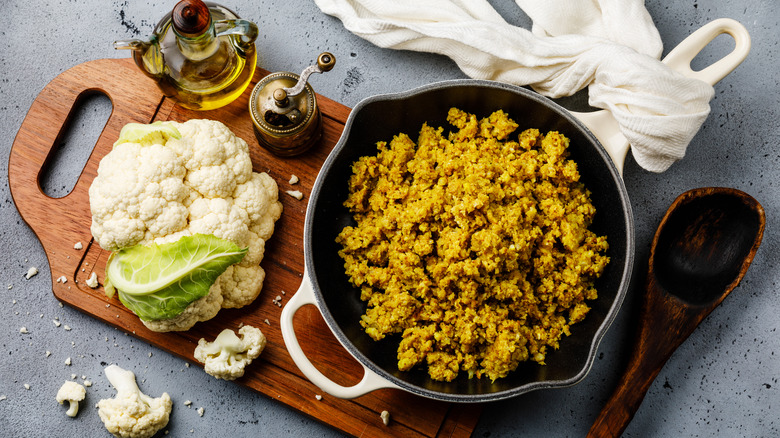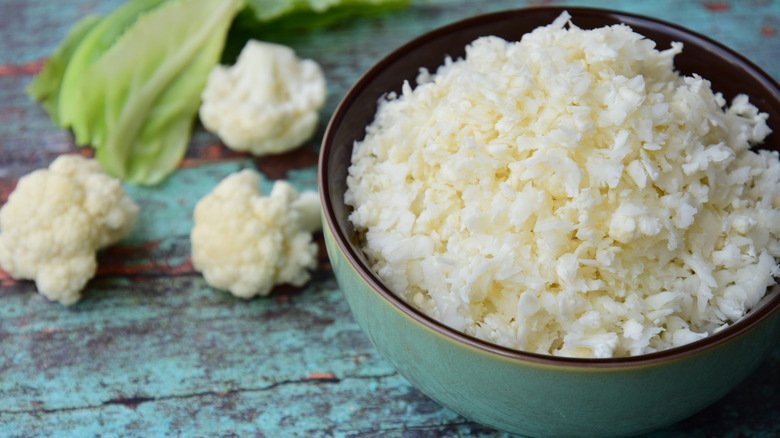Why You Should Never Cook Riced Cauliflower In Water
If you've never prepared riced cauliflower before, here's a tip; never cook it in water or it will become mushy instead of deliciously al dente. Bake, steam or fry it instead to help it retain its tender but firm texture.
Riced cauliflower is simply raw cauliflower that's been put in a food processor so it resembles the appearance of cooked grains of rice. You can make it at home with fresh cauliflower or buy packs of prepped cauli rice at the supermarket that can be cooked from frozen. When prepared well, its texture has some bite to it, which is why it makes such a delicious alternative to regular rice. Moreover, it's a low-calorie density, non-starchy vegetable that serves many of the same functions as regular rice. For example, you can combine it with veggies, bacon, and soy to make fried cauliflower rice or simply serve it as a side with a filet of fish or grilled chicken breast.
However, boiling the processed cauliflower in water (in the same way as you'd cook jasmine or Basmati rice) is a misstep because the grains can overcook and become waterlogged very quickly. This, of course, defeats the entire purpose of riced cauliflower because it's no longer toothsome and textured, but mushy and wet. While mashing softened cauliflower with a knob of butter makes for a scrumptious substitute for mashed potatoes, it certainly doesn't have the same consistency as a serving of rice.
Riced cauliflower cooks in its own water content
Whereas rice grains plump up and soften in boiling water, like pasta or dried beans, cauliflower rice doesn't need to absorb water to cook through. This is because there's enough moisture in the body of the vegetable to help it become tender with a quick steam in the microwave, a speedy roast in the oven, or a fast saute in a skillet with a slick of oil. In fact, cauliflower boasts a whopping 92% water content — the same as watermelon — which helps to promote fullness without adding extra calories to a meal. Cooking it in a way that boosts the evaporation of water within the grains reduces sogginess.
While the steaming method produces perfectly cooked grains that you can eat plain or jazz up with herbs and a dressing, there's something to be said for frying the riced cauliflower in a hot pan with some fat and seasonings. This method toasts up the edges of the individual grains of riced cauliflower — lending them more texture, some color, and a deeper, nuttier flavor, by extracting the excess water.
Once your riced cauliflower is cooked, sprinkle it over a salad, serve it under a spicy Thai curry or stuff it into a bean burrito. There are endless ways to use this low GI champion in your cooking to boost your five a day and maximize satiety.

